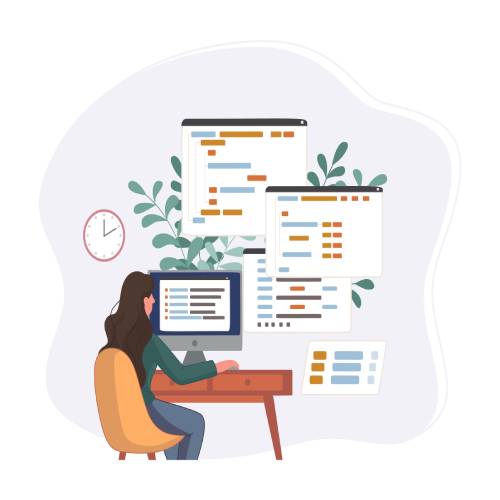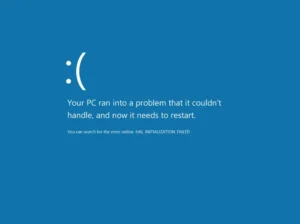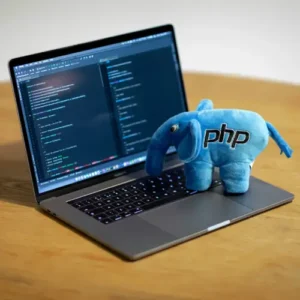A back-end developer creates the foundational code for a website or application. Discover more about this profession and the entry requirements.
Have you ever wondered what happens on a website in the background? What precisely happens when you click a button to go to another page? And what happens to your private data when you register for a free trial?
The professionals that create and manage the systems that allow websites to handle data and carry out operations are known as back-end developers. similarly, Back-end developers are involved in server-side tasks that you cannot see, such as data storage and security, in contrast to front-end developers who are in charge of everything you can see on a website.
The internet has changed how people access information since the late 1980s and early 1990s, and web development has progressed ever since. Likewise, Due to its vital role in our digital world, there is a great demand for web developers. Thankfully, anyone may acquire the technical knowledge required to become a front-end, back-end, or full-stack (front- and back-end) developer.
Back-end development: What is it?
Working on server-side software, or what you can’t see on a website, is what back-end development entails. By concentrating on databases, back-end logic, application programming interfaces (APIs), architecture, and servers, back-end developers make sure the website functions properly. Therefore, They employ programming that facilitates database communication, data storage, comprehension, and deletion for browsers.
To create the framework of a website or mobile app, back-end developers work in tandem with front-end developers, product managers, primary architects, and website testers. That is to say, Back-end engineers need to be knowledgeable in a wide range of frameworks and tools, including Python, Java, and Ruby. In other words, They guarantee that the back end responds promptly and effectively to user queries on the front end.
Jobs and duties for back-end developers
Back-end developers need to be very skilled at collaboration as well as possess technical knowledge. Above all, You should have the independence to create the web infrastructure as a back-end web developer.
Many back-end developers work on the following projects on a daily basis:
Create and maintain websites
A back-end developer’s primary duty is to employ a variety of tools, frameworks, and languages to identify the most effective way to create and manage websites. Understanding cross-platform functioning and compatibility is necessary for this.
Write clean, maintainable code
Web developers need to produce high-quality code in order to create long-lasting web apps.
Create and manage testing schedules to enhance user interface and experience, guaranteeing optimal display across a range of browsers and devices. This is known as quality assurance (QA) testing.
Analyze effectiveness and speed: Once a website is operational, as well as throughout updates and modifications, developers must evaluate its scalability and performance, making any necessary code adjustments.
Debug and troubleshoot: Have the ability to identify problems, find solutions, and communicate the results to project managers, stakeholders, and QA teams.
Assistance and lead training for junior developers while maintaining procedures with client teams to ensure continuing support.
Should I pursue back-end development?
A job in web development can be a good fit for you if you appreciate studying computer languages and utilizing technological resources to create high-quality back-end applications. An introductory web development course is being given on Coursera by the University of California, Irvine.
What equipment do back-end programmers use?
To create, test, and manage web applications, web developers work with a range of tools. Typical resources used by back-end developers include:
Languages for programming
Frameworks:
- Laravel
- Django
- Spring
- Rails by Ruby
- Meteor
- Node.js
Databases:
- MongoDB
- MySQL
- Oracle
Servers:
- Apache
- NGINX
- Lighttpd
- IIS Microsoft
How do you develop back-end code?

To become a web developer, you can choose from a variety of routes. Assess your current transferrable talents and think about developing the new ones need to pursue a back-end developer employment whether you are a fresh graduate or hoping to change careers.
Technical abilities of a back-end developer
You must acquire specific technical abilities as a back-end developer in order to construct the back-end of a web or mobile application.
Back-end programming languages like Python, Java, and PHP are essential for every back-end developer to be proficient in. When used in conjunction with servers, databases, and frameworks, these enable the website to function. Because it is compatible with artificial intelligence (AI) and machine learning, as well as working well for generating clear and logical code, Python is one of the most widely used programming languages. HTML, CSS, and JavaScript are front-end languages that are helpful to know in general.
Frameworks
The libraries of back-end programming languages known as frameworks aid in the creation of the server configuration. After that, They frequently go hand in hand with programming languages; for example, if you are familiar with Python, chances are good that you are also familiar with Flask, Django, or another Python-based framework.
Databases and servers
Since back-end programming governs access to this information, including storage and recovery, you’ll need to be familiar with how to stack and restore data from databases. The two most often used databases are MongoDB and MySQL. Similar to how you may use cloud storage for your images, the database saves and organizes the client’s data so that it can be quickly sorted and recovered. Then, this database runs on a server that makes data available upon request.
Application Program Interface (API)
For the purpose of creating application software, an API is a set of definitions and guidelines. Businesses sometimes seek an iOS or Android mobile app in addition to websites for web browsers. Your employment options will increase if you are familiar with application-building languages like JavaScript.
Clearance for accessibility and security
You should educate yourself on network protocols and web security. Your success as a back-end developer will depend on your ability to safeguard servers and databases.
Consider enrolling in IBM’s Full-Stack Cloud Developer professional certificate program if you are interested in learning about all available cloud-specific technologies. You will gain knowledge of front-end languages like HTML and CSS, back-end languages and frameworks like Express, Node.js, Python, and Django, and much more under the direction of IBM specialists. Whether you choose to apply for cloud-related jobs, they are fundamental tools.
Workplace abilities for back-end developers
These workplace abilities can help you collaborate more successfully, efficiently, and seamlessly with team members in addition to your technical skills.
Communication: In order to carry out the engineer’s vision, a back-end web developer must fully comprehend it. You can share any ideas and troubleshoot with team members and stakeholders with the aid of strong written and verbal communication skills.
When creating a web or mobile app, you must be able to solve problems analytically and come up with workarounds, such as debugging and revising code, without crashing the entire website. In conclusion, As a developer, you should be able to identify the causes of a piece of code’s success or failure, as well as foresee and eliminate problems. Knowledge of the industry: It’s always helpful to have a comprehensive understanding of the tech sector to stay current on platform and language improvements, as well as on broader economic developments. Examine blogs, forums, articles, and books about web and app development to brush up.










